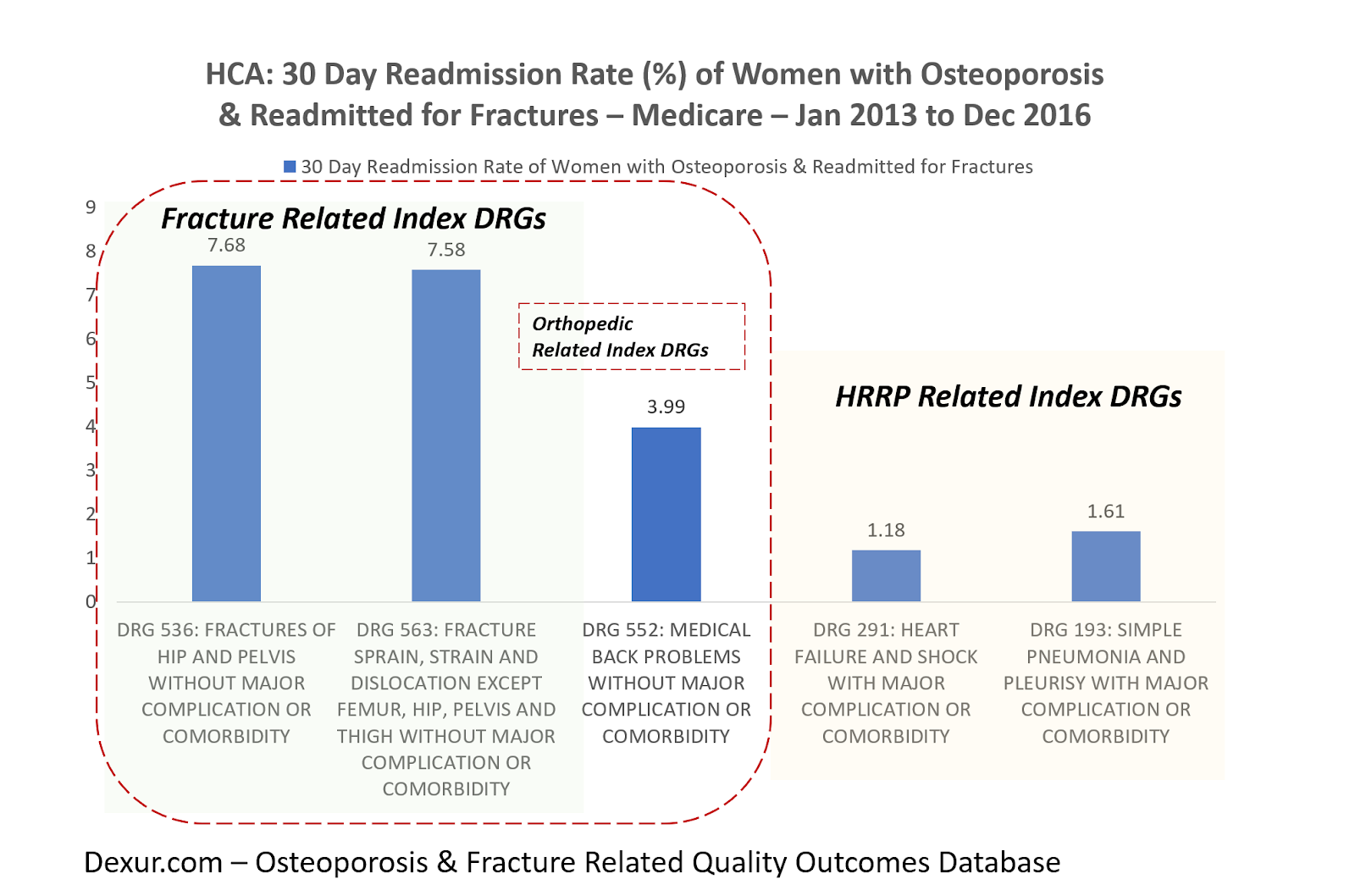Tymlos and the Potential for Osteoporosis Management in Health Systems
In Tymlos, Osteoporosis
Get Dexur’s Personalized Hospital Specific Presentation on Quality, Safety, Compliance & Education
By: James Pitt Apr. 26, 2018
Dr. Michael Lewiecki of the New Mexico Clinical Research & Osteoporosis Center published a recent study of trends in osteoporosis-related fractures visible in Medicare claims data. Dr. Lewiecki's findings were so alarming Jane Brody of The New York Times referred to them as a "perfect storm" in a February 2018 article.
- The data revealed a steady decline in hip fractures among women 65 and older on Medicare to 730 per 100,000 in 2015 from 931 per 100,000 in 2002. But starting in 2012, the rate adjusted for age suddenly leveled off. Had the decline continued, an estimated 11,464 fewer women would have broken their hips between 2012 and 2015, the researchers reported in December in the journal Osteoporosis International.
- Dr. E. Michael Lewiecki said "About 80 percent of patients with a hip fracture are never treated although almost all have osteoporosis and are at risk of another hip fracture."
- Although bone-sparing medication has been shown to reduce the risk of a second hip fracture, use of bone-sparing medications has declined. A study of 22,598 patients found that use of the drugs declined from "an already dismal 15 percent in 2004 to an abysmal 3 percent in the last quarter of 2013," wrote Dr. Sundeep Khosla, a bone specialist at the Mayo Clinic in Rochester, Minn., in an editorial in 2016 in the Journal of Bone and Mineral Research. He likened the situation to not treating patients for high blood pressure or elevated cholesterol following a heart attack. Calling it "a crisis in the treatment of osteoporosis," Dr. Khosla said "Despite the development of several effective drugs to prevent fractures, many patients, even those who unequivocally need treatment, are either not being prescribed osteoporosis medication at all, or when prescribed, refuse to take them."
Dr. Khosla's comment highlights a key challenge in osteoporosis treatment. A variety of specialists in a health system can treat osteoporosis, including endocrinologists, rheumatologists, and, orthopedists. This can cause a bystander effect, where each specialist assumes someone else will be responsible for managing Osteoporosis for their patients.
Tymlos (abaloparatide) is an osteoporosis drug by Radius Pharmaceuticals, approved by the FDA in 2017. Tymlos is a human parathyroid hormone related peptide [PTHrP(1-34)] analog indicated for the treatment of postmenopausal women with osteoporosis at high risk for fracture, and substantially reduced relative risk of fracture vs placebo in a 2016 clinical trial. The challenge for adopting Tymlos within a health system from an osteoporosis management perspective has been: who owns osteoporosis?
To answer this question, Dexur examined women who had osteoporosis and were readmitted to the hospital with a fracture within 30 days. CMS and other payers look closely at 30-day readmissions and tie several payments/penalties to this metric. CMS measures all-cause 30-day readmissions across an entire hospital; and, in the Hospital Readmission Reduction Program (HRRP), zooms in on key categories such as heart failure and pneumonia. Since hospitals closely monitor 30-day readmissions, could an approach of reducing 30-day readmissions related to fractures help kick-start closer management of osteoporosis?
Dexur's Osteoporosis & Fracture Quality Outcomes for Womenis powered by an analysis of Medicare claims and includes data for all hospitals and IDNs. We analyzed fracture 30 day readmissions for women with osteoporosis for HCA, one of the largest IDNs in the country, to further investigate who could "own" the problem of osteoporosis-related fractures.

As the above chart shows, the highest readmission rates of about 7.5% are when the Index DRG is an orthopedics related fracture (DRG-536 & DRG-563). Even in other (non-fracture) orthopedic DRGs like DRG-552, the readmission rates are much higher than the norm. Furthermore, heart failure (DRG-291) and pneumonia (DRG-193) are part of the HRRP program but also have fracture related 30-day readmissions. The HRRP program penalizes hospitals for excessively high readmission rates compared to national averages.
Based on this data, there could be two main groups within the larger hospital who could “own” the osteoporosis-related fracture issue. The first group could be the orthopedics department, which has a much higher rate of readmissions due to fractures. Individual physicians and the larger hospitals could be impacted via MACRA measures because of these all-cause readmissions across the entire hospital. The second group who could “own” the osteoporosis problem could be hospital-wide quality and performance improvement departments, since they tend to focus on improving hospital-wide outcomes such as readmission rates. These “horizontal” quality teams could work in tandem with specialists in the orthopedics department to find solutions for osteoporosis-related fractures. However, before drugs such as Tymlos are presented as solutions, both orthopedic departments and quality teams would need to have effective data to understand the disease burden of osteoporosis in their specific health system. The data could be used by the “owners” to champion the cause of increased DEXA screenings and appropriate osteoporosis medications.
ABOUT THE AUTHOR
